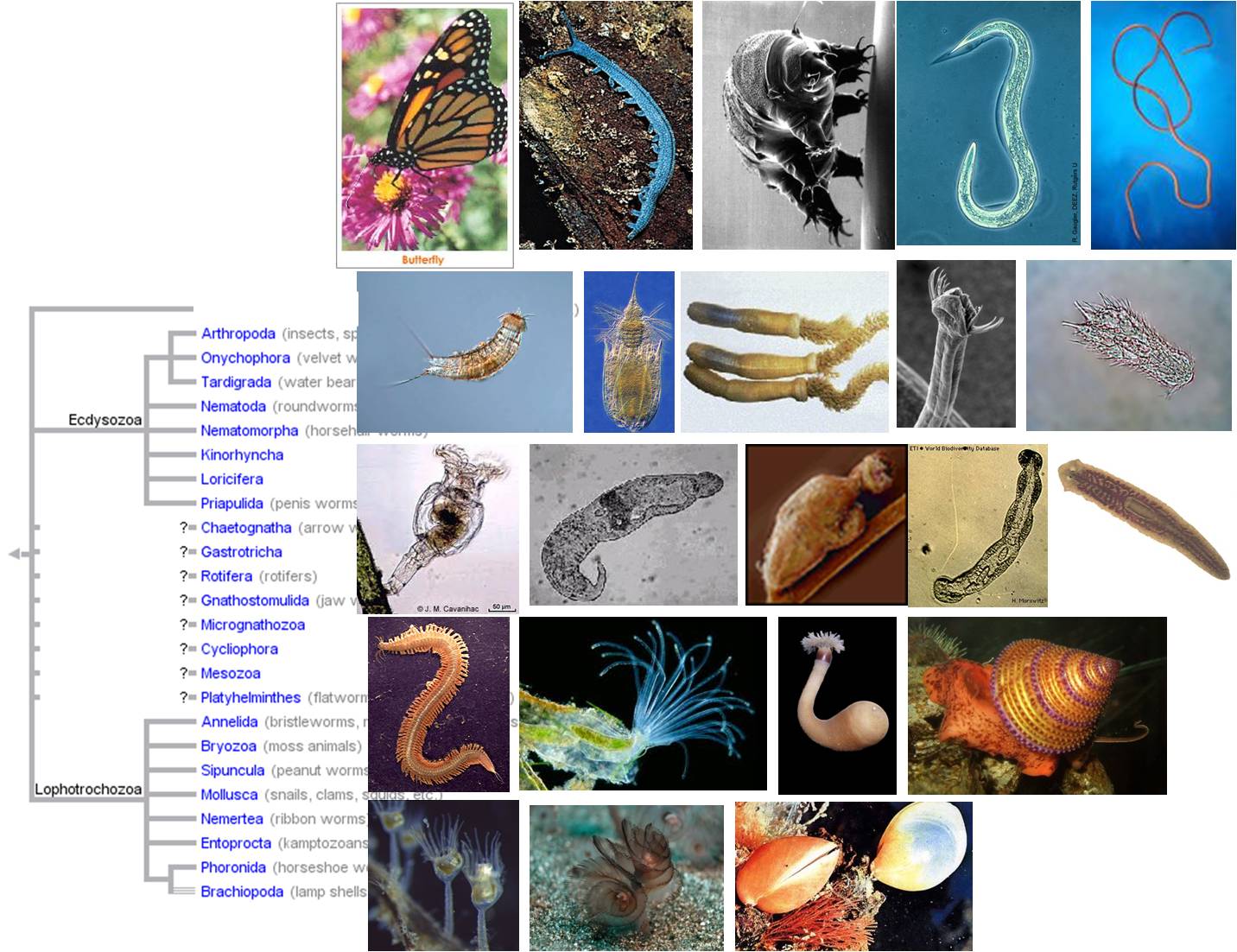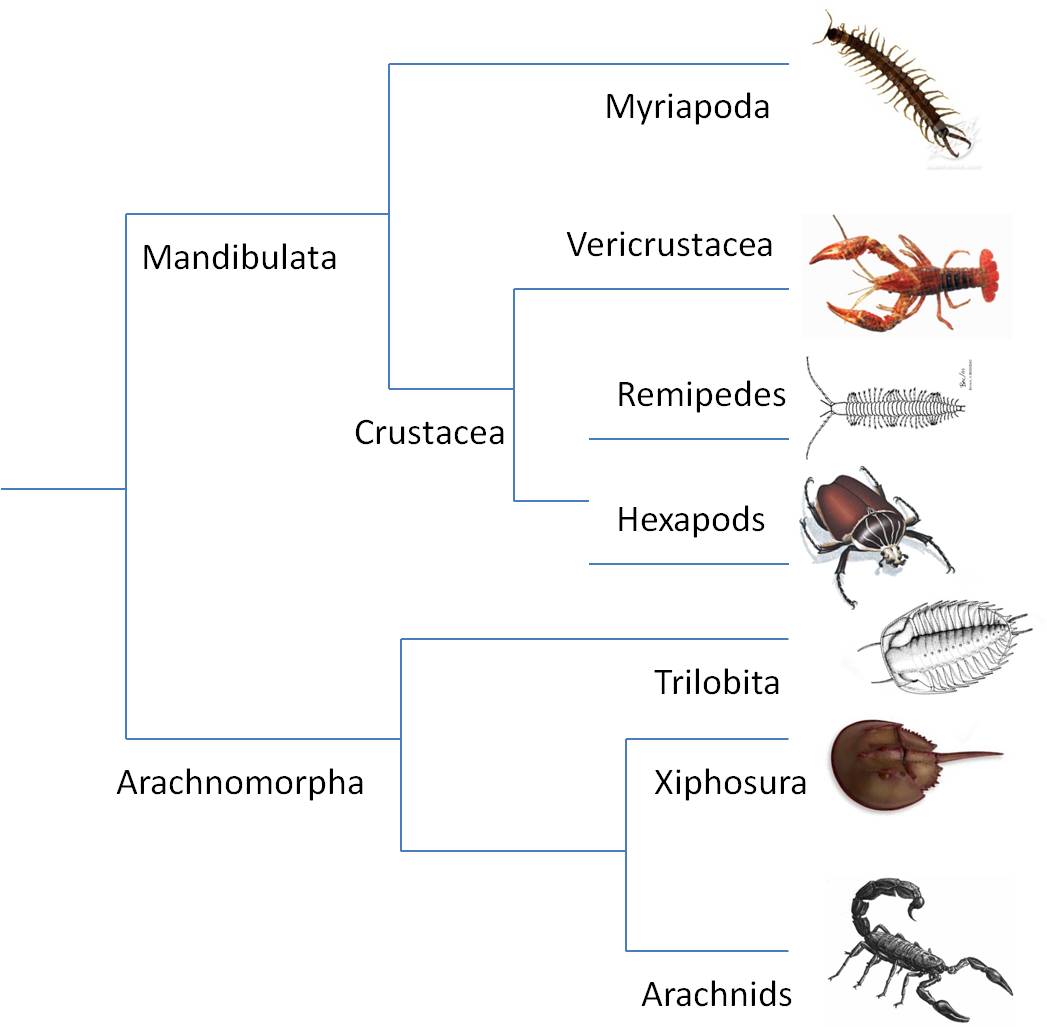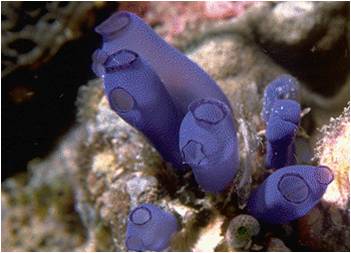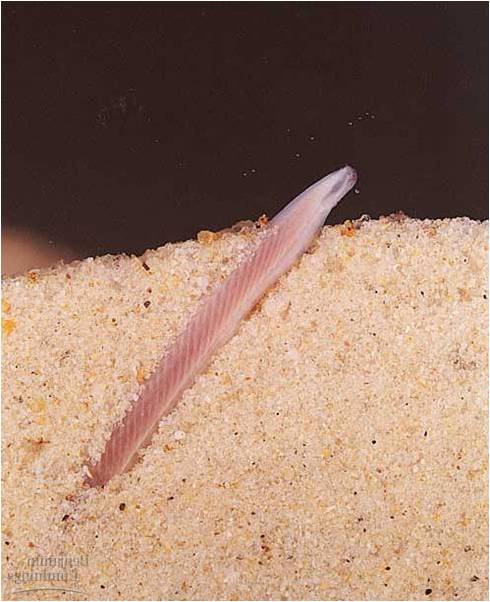 The
Diversity of Life
The
Diversity of Life  The
Diversity of Life
The
Diversity of Life 5. Major Phyla
a. Phylum Porifera: Sponges
b. Phylum Cnidaria: Hydra, anemones, corals, jellyfish
The "Bilateria"
Protostomes: Lophotrochozoans
Protostomes: Ecdysozoans
 f.
Phylum Nematoda: Roundworms
f.
Phylum Nematoda: Roundworms
Like all Ecdysozoans, nematodes have a cuticle that must be shed in order for the animal to grow. In most nematodes, the cuticle is shed four times during the growth phase of the organism. Nematodes have a complete digestive tract and some cephalization, but they generally have a somewhat simplied and reduced body plan. Many are free-living in soil and aquatic environments, but many are parasitic, infecting all other forms of multicellular life. Nematode infections in humans cause trichinosis, filariasis, elephantiasis, and ascariasis.
g. Phylum Tardigrada: Waterbears
This is a curious phylum of the toughest animals on earth. They can tolerate temperatures above 150 C for short periods, and can be dehydrated to 1% of their normal water content for 10 years and be rehydrated. They can also tolerate the vaccuum of space and 6000 atmospheres of pressure! They are found in terrestrial, marine, and aquatic habitats from the poles to the tropics. Most eat plants, algae, or bacteria. With the onychophorans, they are the sister group to the arthropods.
h. Phylum Onychophora: Velvetworms
These animals have segmented bodies but lobe-like legs. They are thought to be a sister group to the arthropods, perhaps representing the living discendants of the link between the annelids and arthropods. They are tropical, and they capture prey by squirting them with a glue to subdue them.
i. Phylum Arthropoda
 The
arthropods are the most diverse animal group on earth, accounting for 85% of
all animal species. The are an ancient group that came to dominate during the
Cambrian period. The earliest groups were the Chelicerates and Trilobites. The
chelicerates are identified by having only two appendages forward of the mouth
- these are the small, typically pincer-like chelicerae. In spiders, the chelicerae
have evolved into fangs that deliver poison to subdue prey. The other group
of chelicerates are the Horseshoe crabs - an ancient relictual taxon. The other
major clade of arthropods are the mandibulata, which divide into the myriapods
(millipedes and centipedes) and the crustacea. Myriapods are segmented, without
much specialization; each body segment has similar paired appendages used for
walking Centipedes have one pair of legs per segment, and they are predatory;
they have poison glands like spiders and inject their prey to immobilize them.
Millipedes have two apirs of legs per segment. they are slower than centipedes,
and they feed on detritus. In the Eucrustacea, the segments have paired appendages
but they differ in length and function. In addition, they are biramous - having
two roots. One root is a leg, and the other is a gill. Curiously, the insects
are a group derived from aquatic crustaceans. They have flourished and radiated
in terrestrial environments like no other group in the history of our planet.
They have reduced, fused body parts, with appendages limited to head and thoracic
segments. Insect diversity is staggering, and this diversity has interested
ecologist for along time. Why are there so many species of insects? Well, their
diversity is testimony to their adaptability - their exoskeleton means that
they can tolerate dessication. Their small size means that they don't need many
resources to survive. Their power of flight means that they can disperse easily.
This means that they can find resources, but it also means that they are prone
to geographic isolation (and speciation). Finally, they are fecund - most insects
can lay many eggs and thus establish large populations quickly. For all these
reasons and many more, insects are prone to succeed and speciate.
The
arthropods are the most diverse animal group on earth, accounting for 85% of
all animal species. The are an ancient group that came to dominate during the
Cambrian period. The earliest groups were the Chelicerates and Trilobites. The
chelicerates are identified by having only two appendages forward of the mouth
- these are the small, typically pincer-like chelicerae. In spiders, the chelicerae
have evolved into fangs that deliver poison to subdue prey. The other group
of chelicerates are the Horseshoe crabs - an ancient relictual taxon. The other
major clade of arthropods are the mandibulata, which divide into the myriapods
(millipedes and centipedes) and the crustacea. Myriapods are segmented, without
much specialization; each body segment has similar paired appendages used for
walking Centipedes have one pair of legs per segment, and they are predatory;
they have poison glands like spiders and inject their prey to immobilize them.
Millipedes have two apirs of legs per segment. they are slower than centipedes,
and they feed on detritus. In the Eucrustacea, the segments have paired appendages
but they differ in length and function. In addition, they are biramous - having
two roots. One root is a leg, and the other is a gill. Curiously, the insects
are a group derived from aquatic crustaceans. They have flourished and radiated
in terrestrial environments like no other group in the history of our planet.
They have reduced, fused body parts, with appendages limited to head and thoracic
segments. Insect diversity is staggering, and this diversity has interested
ecologist for along time. Why are there so many species of insects? Well, their
diversity is testimony to their adaptability - their exoskeleton means that
they can tolerate dessication. Their small size means that they don't need many
resources to survive. Their power of flight means that they can disperse easily.
This means that they can find resources, but it also means that they are prone
to geographic isolation (and speciation). Finally, they are fecund - most insects
can lay many eggs and thus establish large populations quickly. For all these
reasons and many more, insects are prone to succeed and speciate.
In looking at the mandibulate groups, we see a nice example of an important evolutionary pattern: replication, specialization, and reduction. The myriapods have probably preserved the ancestral body plan within the Arthropoda. Like their probable annelid ancestors, the myriapods are composed of many similar segments. The Eucrustacea represent the next step in the evolution of many body plans - specialization of different body segments for particular functions. So, although every segment of the body of a eucrustacean has paired appendages (like myriapods), those appendages are different lengths and sizes and perform different functions. Appendages in the head are antennae and tiny feeding pincers. Appendages in the thorax are legs and claws (like in lobsters and crabs). Appendages in the abdomen are involved in reproduction (holding eggs, for instance). Next time you have lobster, crab, or shrimp, take a closer look at your meal and notice the paired appendages on each body sement that have become specialized for different functions. In the most derived group of crustaceans - the insects - there is fusion of segments in a given body region and the elimination of redundancy. The abdominal segments have fused into one body region, and the appendages have been lost. The thoracic segments have fused into one body region, and most segments have lost their legs - reducing the redundancy and getting by with 6. Likewise, head segments have fused, and insects have only one pair of antennae (unlike the 2 pairs of eucrustaceans). So, in this one clade, we see the important pattern of segmentation, specialization, and fusion / reduction as a mechanism to produce evolutionary novelty.
Deuterostomes:
j. Phylum Echinodermata: Sea stars, sea urchins, sea cucumbers, sand dollars
 Like
all deuterstomes, the blastopore forms the anus in this phylum. The echinoderms
have an internal skeleton consisting of separate plates that interlock. This
allows them flexibility, but also remarkable rigidity. The body axis of a starfish
is from the bottom, called the oral surface, to the top, called the aboral surface.
So, the legs radiate from the 'waist' of the animal. This symmetry is called
'pentaramous' symmetry. The other interesting adaptiation of echinoderms are
the internal canal system. They have tubes that fill tube feet, causing them
to extend and retract as they fill and deflate. This internal system of canals
is continuous with the environment, with a valve called the madreporite that
regulates water flow from the environment to the canals. The digestive tract
of a starfish is short, from the oral to aboral surface. But the efficiency
is increased by having digestive glands radiate out into the arms or the starfish.
Gonads are also in the limbs.
Like
all deuterstomes, the blastopore forms the anus in this phylum. The echinoderms
have an internal skeleton consisting of separate plates that interlock. This
allows them flexibility, but also remarkable rigidity. The body axis of a starfish
is from the bottom, called the oral surface, to the top, called the aboral surface.
So, the legs radiate from the 'waist' of the animal. This symmetry is called
'pentaramous' symmetry. The other interesting adaptiation of echinoderms are
the internal canal system. They have tubes that fill tube feet, causing them
to extend and retract as they fill and deflate. This internal system of canals
is continuous with the environment, with a valve called the madreporite that
regulates water flow from the environment to the canals. The digestive tract
of a starfish is short, from the oral to aboral surface. But the efficiency
is increased by having digestive glands radiate out into the arms or the starfish.
Gonads are also in the limbs.
k. Phylum Hemichordata: Acorn Worms
The hemichordates are an exclusively marine group. There are interesting because they have two of the four characteristics seen in the chordate: they have pharygeal gills slits and they have a hollow dorsal nerve chord. If you remember from the earthworm dissection, other phyla have ventral nerve chords.There are two major groups of hemichordates, and one group forms protective tubes out of collagen they secrete, and they filter feed with echinoderm-like arms.
l. Phylum Chordata: Tunicates, Cephalochordates, and Vertebrates
All chordates have four characteristics at some point in their development: 1) pharyngeal folds (or gill slits), 2) hollow dorsal nerve tube, 3) notochord, and 4) a post-anal tail. As you might suspect, the similarities among organisms in this phylum are most evident in the larval stages. Cephalochordates like Amphioxus probably maintain the ancestral condition within the phylum. They have swimming larvae, but adults burrow and either feed on detritus or filter feed using their gills as a sieve. The oldest chordate fossils - Pikaia from the Cambrian Period -have a morphology very similar to modern cephalochordates. The Urochordata - the tunicates - have adapted to a more specialized filter-feeding lifestyle. Although their larvae are mobile and similar to Amphioxus, they settle out on a substrate, on their backs, and fold head-to-tail. The pharynx becomes a filtering 'basket'.
 |
 |
 |
Urochordata: Tunicates |
Cephalochordata: Amphioxus |
Vertebrata |
Study Questions:
1. What distinguishes the ecdysozoans from the lophotrochozoans?
2. Name two diseases that nematodes cause.
3. Be able to identify pictures of Tardigrades, onychophorans, and the other phyla listed here.
4. What important evolutionary pattern do we see in the mandibulate groups - going from myriapods to eucrustaceans to insects?
5. List the characteristics of the Hemichordates and Chordates
6. How do tunicates, cephalochardates, and vertebrates differ?